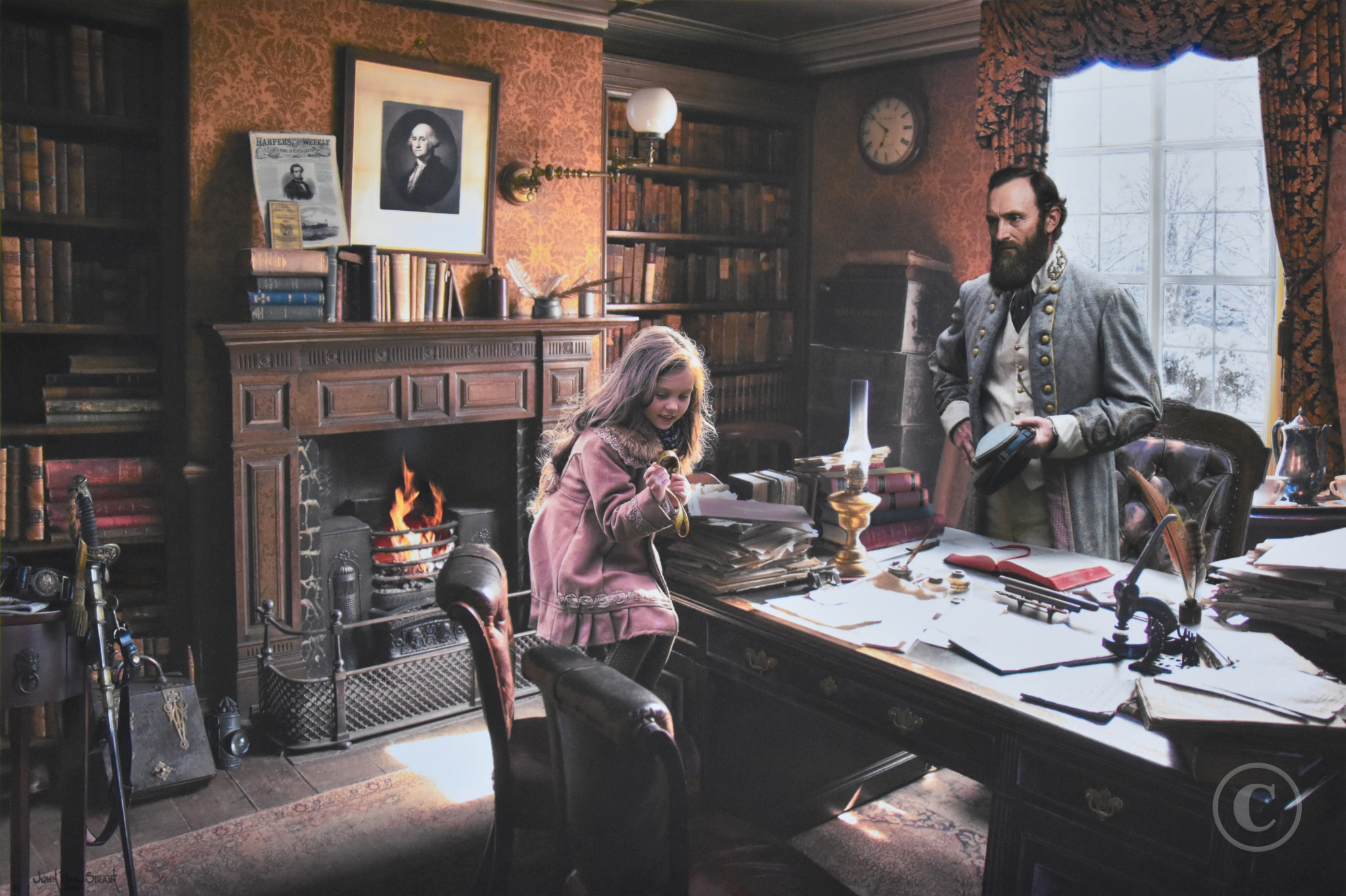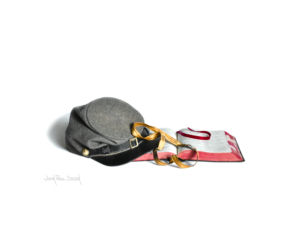STONEWALL’S GOLD BRAIDGeneral T. J. Jackson & Jane Wellford CorbinMoss Neck Manor, Virginia - January 1863 
The great December victory at Fredericksburg had General Stonewall Jackson and his men in high spirits. For the next two and a half months Jackson’s Second Corps would spend winter quarters at Moss Neck Plantation located 10 miles down river from Fredericksburg. Moss Neck was a sprawling 1600 acre estate owned by the Corbin family who had lived in the area for two centuries. The Corbins were part of Virginia’s First Families, like the Washingtons, Lees, Harrisons and Carters. James Parke Corbin inherited the plantation from his father and built a palatial home, completing it in 1856. As a Virginia planter and land owner, James Corbin shared in the southern reverence for George Washington as a symbol of independence, leadership, and founding father of the country. His grandfather, Richard Corbin was Receiver-General of the Colony of Virginia and once acted as mentor to young George Washington, even recommending him for a commission in the Virginia militia in the 1750’s. Richard’s son Francis went on to serve in the Virginia House of Delegates and was a delegate to the Virginia Ratifying Convention of 1788, where he voted in favor of the U.S. Constitution. When General Jackson and his Second Corps arrived near Moss Neck after the battle of Fredericksburg, the Corbins were thrilled. James Corbin graciously offered accommodations in the main house for General Jackson and staff in their two-story Colonial Greek Revival patterned 250 foot long mansion, featuring an octagonal cupola. But Jackson politely declined out of modesty and respect for the family’s space, choosing instead to stay in his tent along side his men. Not long after, Jackson caught a cold, likely from the snowy conditions of winter, and accepted the use of a detached office building near the manor house. James Corbin had three sons and a daughter. All the boys were serving in the Confederate Army. James' daughter, Katharine “Kate” would fall in love with one of Jackson’s staff members, Alexander “Sandie” Pendleton, and the couple would marry at the manor on December 29, 1863. The eldest son, Richard Corbin was a trooper in Company B of the 9th Virginia Cavalry. Richard’s young wife managed much of the estate, and their five year old daughter Jane “Janie” had the run of the place. Janie took to Jackson immediately, and the general always had a fondness for little children. Janie was described by Lieutenant Smith of the staff as, "a sweet little child of 5 years, with a sweet and happy face and fair, long flaxen curls. She was very pretty and bright, and happy a sunny child as I ever saw. She was a pleasure to all of us. She was the General’s delight.” Almost every day Janie would come over to the office to visit General Jackson. A close bond formed between the two. For hours she would sit on the floor next to the warm fire and cut out paper dolls that she would call her “Stonewall Brigade.” One day Jackson received a new officer's kepi from his wife Anna. The child was immediately drawn to the gold braid on the hat. Without much thought, the unostentatious Jackson cut off the braid with a pen knife and gave it to the excited admirer, saying “Janie, it suits a little girl like you better than an old soldier.” The gold band was then placed on the girls head like a crown. From that point on Janie wore the gold braid as an ornament at every function. Staff members were amazed at seeing this soft side of Jackson, so different from their hardened battle commander. Preparing for the spring campaign, General Jackson shifted his personal headquarters to Hamilton’s Crossing on March 16, leaving his friend Dr. Hunter McGuire to tend sick three Corbin children who had contracted scarlet fever. Tragically, despite initial signs of recovery, Jane passed away on March 17, the day after Stonewall had left the estate. When Jackson received the news, he openly wept. Jane’s two young cousins died two days later. Jackson attended the funeral at the family cemetery where three small graves were placed side by side. Jackson was deeply moved, reportedly telling Jane’s mother that “she is not lost, but only gone before.” Archival Paper Giclées
Canvas Giclées
|


